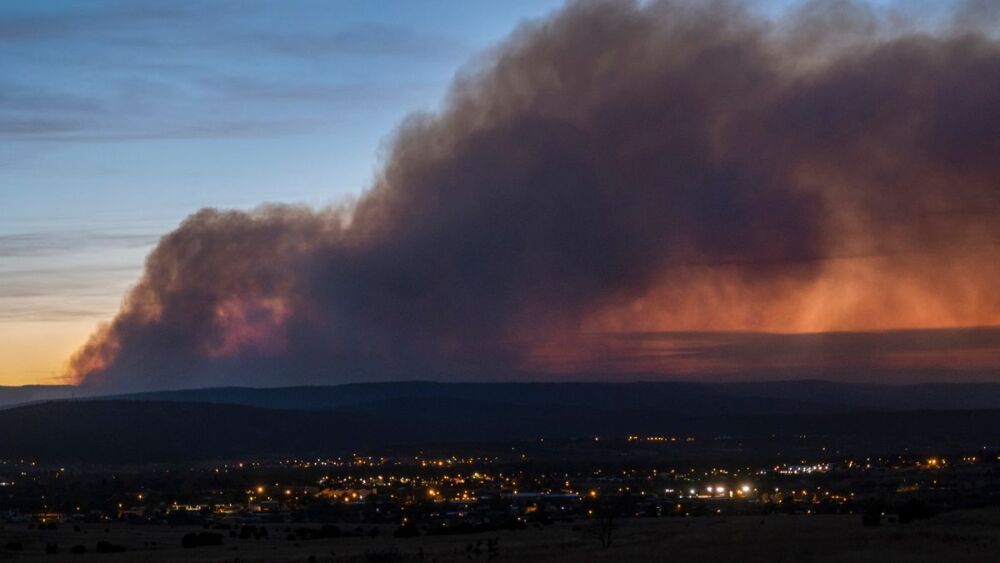When I was a young California firefighter in the 1980s, we used to joke, “This is going to be the worst fire season ever.”
We predicated the statement on the certainty that fire would come. A wet winter meant a hearty new grass crop would fuel fires as hills transitioned from green to golden. A dry winter meant heavier fuels were that much closer to tinder. But by the new millennium, we stopped joking because wet winters were waning, and any way we measured wildfire – largest, most destructive, deadliest – it was breaking new records, and that was no laughing matter.
Today, the wildfire problem is the worst ever. And make no mistake, this insatiable beast hasn’t contained itself to California, the far Western states, the United States or even summer months. I write this as New Mexico, Arizona, Colorado, Texas and Florida are battling major wildfires far ahead of the summer solstice, with over 1 million acres already scorched this year. And last year, numerous countries – Canada, Mexico, Turkey, Greece, Italy, Lebanon, Brazil, to name a few – experienced record-setting wildfires.
Some say the problem is beyond us, that we have no hope of wrangling this beast. But we are firefighters; our job is to wrangle. It won’t be easy, but that never stops us.
As a rookie, I learned a tactic called hotspotting, where we jumped on the trouble spots of a large fire, like where it spread fastest or posed the direst threat. We could calm the entire fire by attacking it at a few points. That’s the approach we should take now as fire service leaders – an urgent, prioritized assault on hot spots that can calm the wildfire situation and at least make it manageable.
We know where to focus: quick suppression, fuel management, wildland-urban interface (WUI) codes, and ignition reduction. So let’s start there.
Quick suppression
Quick suppression is a must during conditions that favor uncontrolled fire: low humidity, high temperature, strong wind or lightning activity. Dump the resources you have on the fire that is burning now instead of holding back “just in case” another fire breaks. If you have multiple fires, douse the small ones first, or all the fires will become too big to stomp out quickly. Don’t be shy about asking for or giving mutual-aid assistance here. Remember, you get what you give when it’s your town in trouble.
Fuel management
Aggressive suppression should be balanced with a healthy dose of prescribed fire. Intentional fire thins fuels and regenerates the land. Set outside of peak fire conditions and adequately staffed, these fires don’t set records. They don’t shoot charred plastics from incinerated towns into the jet stream. They don’t fill valleys a thousand miles away with choking smoke. And when coupled with other robust fuel management techniques, like mechanical thinning and well-placed shaded fuel breaks, firefighters have a chance to make a stop before a fire becomes too unwieldy.
WUI codes
The next hot spot is all about our ever-expanding WUI. For better or worse, humans have decided they want to live where fire lives. The best way to protect and serve here is through fire department support and enforcement of strong defensible space and WUI building codes. Building engineers have figured out how to effectively harden homes to survive ferocious fires when defensible space guidelines are followed. Requiring new structures to be built to these standards is a no-brainer.
Ignition reduction
The final and perhaps most effective place to attack the fire problem is reducing ignitions. And here’s where I get indignant. Mother nature and criminals are responsible for roughly 20% of wildfires – not much we can do proactively here. But how about the remaining 80% of fires attributable to human blunder? Does this sound familiar?
- “How romantic to release flying lanterns above an autumn wedding!”
- “Dude, that dirt bike will have more power if you remove the spark arrestor!”
- “We can’t possibly clear around all the powerlines we found time to construct.”
- “There’s no time to tighten those dragging trailer chains, the road awaits!”
- “That campfire looks like it’s out.”
- And my personal favorite: “We can’t ban fireworks in the middle of summer; it helps fund Scouts.”
And just like that, preventing fires becomes un-American. Firefighters have the only voice in the nation that can help reverse this thinking. We must pounce on it from the ground up. Use every fire as a teachable moment. Work with your city managers, council members and finance staff to start a cost recovery program that will pay for itself and send a message to negligent citizens that in this age, there exists a higher level of accountability than, “It’s OK, you didn’t mean to start a raging wildfire that killed eight people, destroyed wildlife habitat, demolished 500 homes and ultimately cost $40 million.”
Fight on all fronts
These focus areas are not new. Still, they haven’t been fully embraced because of pushback from myriad sources. You have to do more than put it in your annual plan and hope it will happen. You have to fight on each of these fronts.
Politicians and budgeteers don’t want to spend money on prevention. Why fund crews to thin vegetation that may or may not burn when there’s always a need for more social help, dialysis and school lunches? See, I told you it wouldn’t be easy.
Environmentalists will balk at disturbing ecosystems with prescribed fire and fuel-thinning. Builders and homeowners will resist extra costs and design constraints. And nobody likes the government weighing in on their wedding or family camping trip or fireworks festivities. Oh, and utility companies will bark the loudest because they’ve already distributed profits derived from making the “business decision” to not bury their powerlines.
Your job is to do what you can to educate all of them. Wildfire is not a maybe these days; it’s an inevitability. The way out of the morass is to plan and budget based on long-term problem-solving, not political expediency or profit margins or lenient enforcement. This, by the way, also happens to be the fiscally responsible approach; prevention costs pennies on the dollar compared to suppression.
Make it happen
Fire is winning. Humans are losing. Hotspotting is a way to regain the ground. It requires thought and courage rather than concessions to the status quo. You are firefighters. You are built for this fight. Make it happen.













